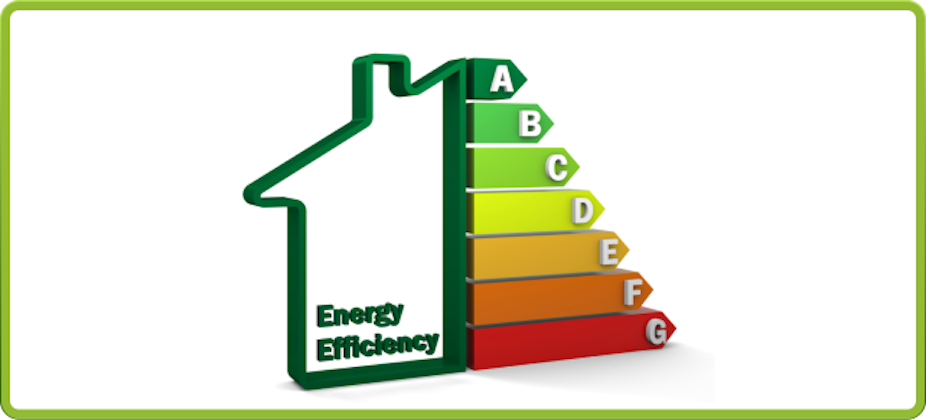What’s the world’s most important fuel, as we head into the 21st century? Oil, coal, gas, renewables? A recent International Energy Agency report stated the most important fuel for the future is energy efficiency. This is because the cheapest energy is energy we don’t use.
Experts agree that energy efficiency – reducing energy demand – is the cheapest and most effective means to meet reduce carbon emissions. Analysis by Ricardo-AEA for the UK Committee on Climate Change assessed the UK situation where, despite the importance and vast potential of energy efficiency measures, the energy debate is focused on supply.
There has been progress in the UK: in 2011, households consumed 17% less energy compared to 2000, with gas consumption dropping by 20%. The Centre for Economics and Business Research showed that the observed reduction of energy demand for household heating is clearly the result of energy efficiency policies such as the now-cancelled Carbon Emissions Reduction Target (CERT). Similar trends can be found in industry, where energy demand has fallen by almost a quarter from 2000 to 2011.

But can there really be a free lunch? Nationally, the cost of saving in homes a unit of electricity was 2.0p/kWh and for gas 0.6p/kWh. Actual electricity and gas prices are now almost ten times as high, which means investing in energy efficiency is highly cost-effective, leading to substantial monetary benefits in a short period of time. It takes less than five years to recoup the outlay for simple energy efficiency measures such as cavity wall insulation and loft insulation.
However, just the cheap and simple insulation measures will not be enough to upgrade Britain’s leaky, inefficient building stock. Across Europe, people now speak about “near-zero-energy” buildings that consume close to zero energy and generate renewable energy. The costs for upgrading Britain’s building stock to this standard would be significantly higher, with the time to recoup costs close to 30 years or more.
Research from the Environmental Change Institute at Oxford University in 2008 suggested we would need to provide £13 billion in financial incentives each year in order to achieve an 80% carbon emissions reduction across the housing stock by 2050, as required to meet the climate targets we have set ourselves.
This is not a free lunch, but considering the potential social, economic and environmental costs of runaway climate change, as a way to reduce carbon emissions it’s a pretty cheap option – especially given that by 2050, the cumulative energy savings from Britain’s now-insulated homes would be worth more than £12 billion per year.

But the UK is miles away from coming close to having even a noticeable proportion of near-zero-energy buildings. We currently spend less than 15% of what is needed, despite Britain’s inglorious record of owning of some of Europe’s oldest and least efficient buildings, wasting much of the energy used to heat our homes.
One reason the UK compares so badly to its European neighbours is the age of the housing stock – Britain’s cities did not suffer the scale of destruction as on the continent during World War II. But culture and of course climate also plays a part – in countries like Sweden or Germany there is a strong imperative to live in well-insulated homes due to the colder winters. Poorly fitted and uninsulated homes would be impossible to rent out where it is still the norm in Britain. So much more progress is needed.
This is why the government put in place schemes intended to push the uptake of energy efficiency measures in British homes. The Green Deal provides loans for mainly low cost measures such as cavity wall and loft insulation. The Energy Company Obligation (ECO), which replaced CERT, focuses on more expensive insulation measures and is aimed at those with no access to finance or those with the most hard or costly to improve homes.
The government promised that the Green Deal would improve 14 million homes by 2020, almost two million homes every year and is expected to have arranged Green Deal funding for at least 10,000 homes by the end of this year. Instead, facing heavy criticism, even from the industry it is supposed to support, the latest figures show only 219 homes have been refurbished, with a further 954 in the pipeline.
Progress under ECO has been equally disappointing. The latest figures published by regulator Ofgem indicate energy companies had achieved just 3% of their Carbon Emissions Reduction Obligation. Compared to the previous scheme, the current set up is delivering 90-95% less energy savings in the face of rising household bills – even less than Nick Eyre and I predicted in our analysis published earlier this year.
Despite this, there are now calls to reduce the energy companies’ targets. Suggested as a means to limit the costs passed on to consumers through their bills, this will only make the situation worse: fewer homes will receive energy efficiency improvements, fewer homes will enjoy reduced energy bills as a consequence, and the vast majority of Britain’s housing stock will continue to require more energy to heat, exposing billpayers to future price hikes.
So should we just scrap these two apparently failing schemes? Certainly not. But they clearly need amending based on what works and what doesn’t. The Green Deal is an innovative concept despite its problems, and energy efficiency obligations such as CERT have historically delivered substantial benefits. But the debate has become politicised, to an extent that decisions with profound implications are rushed, undermining the impressive results that energy efficiency policy has delivered in the past, and jeopardising what they could achieve in the future.

